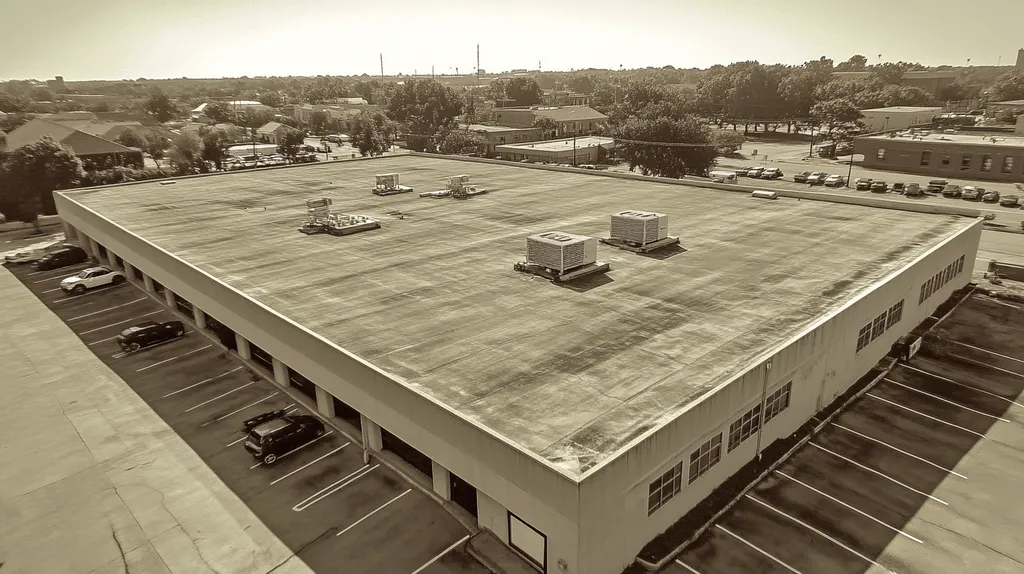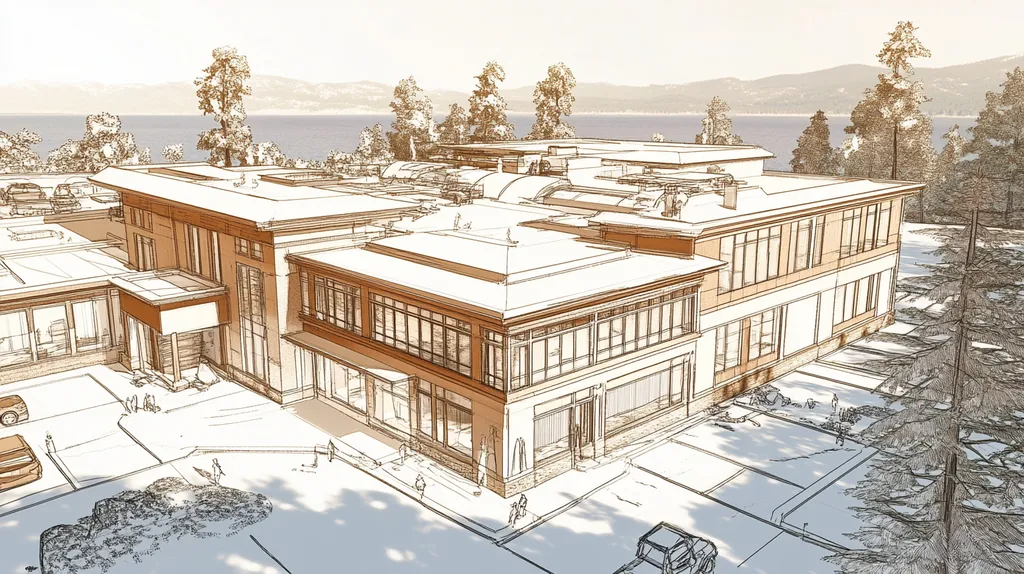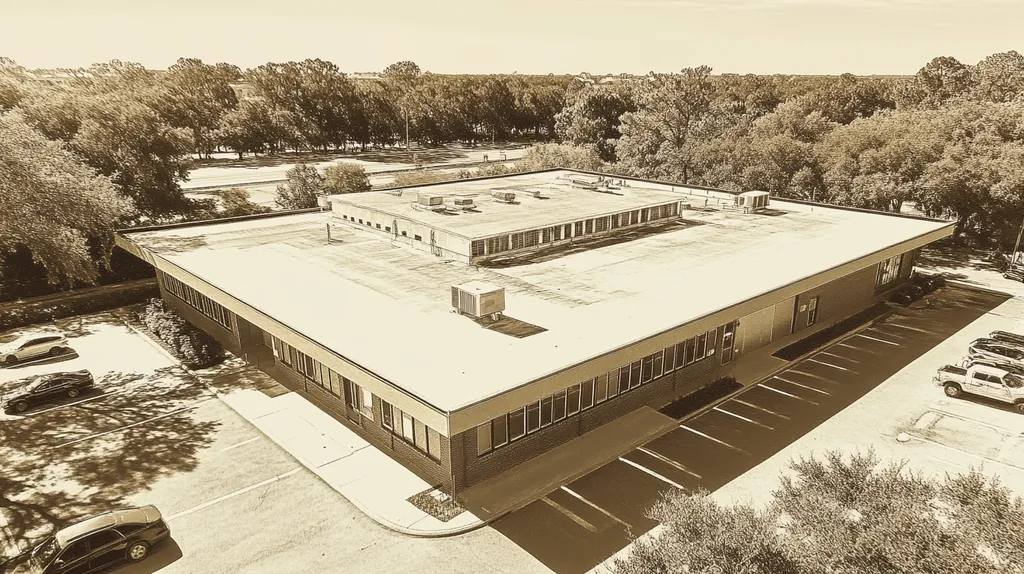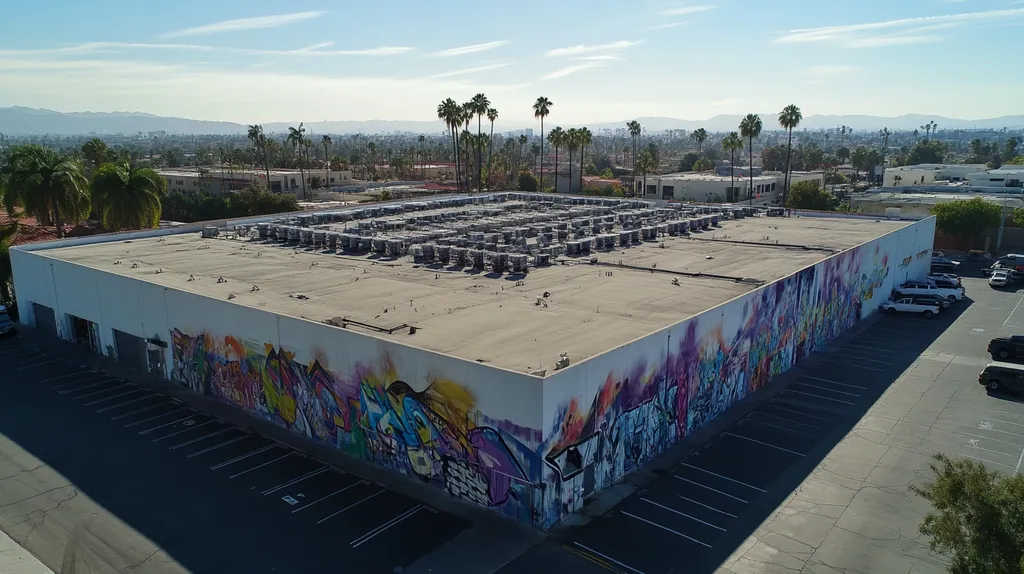When it comes to industrial roofing projects, proper contractor insurance isn’t just paperwork—it’s the difference between financial security and potential ruin. Industry statistics show that roofing-related insurance claims average $54,000 per incident, with nearly 40% of contractors operating without adequate coverage.
From liability protection to workers’ compensation, understanding the intricacies of contractor insurance helps property owners and facility managers make informed decisions that safeguard their investments.
This comprehensive guide breaks down the essential components of industrial roof contractor’s insurance, examining everything from basic coverage types to complex policy considerations that could impact your bottom line.
SECTION 1: THE BASICS EXPLAINED
Grasping the essentials of industrial roof contractor’s insurance is vital for property owners and facility managers alike. It only takes one mishap, like a worker’s injury or unexpected damage, to spiral into hefty financial losses. In fact, statistics reveal that liability claims in construction can set companies back by tens of thousands of dollars, underscoring the necessity of proper insurance coverage. This section will break down what contractor insurance is, its importance for your building, and how it functions to protect both contractors and property owners.
What It Is (In Plain Language)
Contractor insurance is a safeguard for industrial roofers against the financial fallout of accidents or property damage. This type of insurance generally includes general liability and workers’ compensation. General liability coverage protects against damage to others’ property and injury claims, while workers’ compensation covers injuries employees sustain while working on the job.
Many contractors also opt for additional protection with policies like professional liability and commercial auto insurance, each tailored to address specific risks associated with roofing projects. By familiarizing themselves with these various insurance types, property owners can better understand the level of protection they should demand from contractors.
Ultimately, contractor insurance benefits not just the roofing professionals but also acts as a safety net for property owners. When contractors are properly insured, they can approach their projects with greater confidence, reducing the risks tied to roof work.
When hiring a contractor, property owners should always ask for proof of insurance to ensure it meets industry standards and aligns with specific project needs. This proactive step can help prevent conflicts and liabilities down the road.
Why It Matters (To Your Building)
Contractor insurance is paramount for the safety and structural integrity of any industrial building. If an accident occurs—like a worker slipping or equipment damaging a roof—having sound insurance means property owners won’t bear the brunt of unexpected expenses. Without adequate coverage, the financial responsibility could fall squarely on the shoulders of the building owner.
Additionally, ensuring insurance compliance is vital for maintaining project schedules. If an uninsured contractor experiences delays due to legal entanglements or financial issues, the consequences can ripple out, leading to escalated costs and potential damage to the owner’s reputation.
In high-stakes environments like industrial roofing, choosing an insured contractor can significantly reduce risks while ensuring compliance with safety regulations. This choice enhances confidence in a property’s operational reliability and shields against unforeseen liabilities.
In conclusion, verifying that contractors maintain comprehensive insurance not only protects the building but also paves the way for a smoother project completion, ultimately boosting the value of the investment.
How It Works
Industrial roof contractor’s insurance operates by offering financial coverage for specific hazards linked to roofing projects. When an accident happens or a claim is submitted, contractors communicate with their insurance providers to assess the situation and determine if the claim is valid.
The process starts with notifying the insurer about the incident, followed by a detailed investigation. The insurance company evaluates the circumstances and decides how much of the claim will be satisfied. This could include covering medical costs, property repairs, or legal expenses.
For property owners, understanding this process is crucial. Knowing that a contractor has valid insurance reassures owners that any damages and liabilities will be managed with expertise. This information can also influence decisions when selecting contractors for future initiatives.
Furthermore, it’s essential for contractors to maintain open lines of communication with their insurers. This collaborative approach ensures that both contractors and property owners are well-informed about the scope of coverage and any updates related to specific projects.
SECTION 2: PRACTICAL APPLICATIONS
Understanding contractor insurance isn’t just beneficial—it’s crucial for anyone involved in industrial roofing. With the roofing profession ranked among the most hazardous jobs, the risk of accidents is ever-present. A single slip or mishap can lead to significant injuries and financial burdens, making comprehensive insurance coverage essential. This section explores real-world applications of insurance, identifies situations when it’s especially necessary, and highlights how insurance interconnects with other key business systems.
Common Uses & Examples
Contractor insurance acts as a multi-faceted shield, providing protection across various scenarios. General liability insurance stands as the cornerstone of coverage, defending against accidental damage to third-party property. For example, if a tool accidentally falls and dents a neighbor’s car, this coverage steps in to cover repair expenses.
Workers’ compensation insurance plays a pivotal role as well. It protects the financial health of the contractor while also ensuring that injured workers receive necessary medical care and compensation for missed work. If an employee slips off a ladder, this policy alleviates the financial strain on the business by covering medical bills and lost wages.
Commercial property insurance adds another layer of protection by safeguarding physical assets like tools and materials. In the unfortunate event of theft at a job site, this type of coverage helps recover losses, keeping operations running smoothly.
Specialized policies, such as pollution liability, address unique risks tied to roofing materials. Given that roofing projects can sometimes involve hazardous substances, having this insurance prevents hefty fines while offering peace of mind about environmental responsibilities.
When You Need It Most
Some situations heighten the imperative for comprehensive contractor insurance. Many reputable contracts mandate proof of insurance before work starts. In competitive bidding scenarios, showcasing robust coverage not only signals professionalism but also demonstrates readiness to handle risks competently.
Adverse weather conditions are another critical factor. Storms with high winds or heavy rain can cause unexpected damage, making solid insurance crucial for addressing potential claims without severe repercussions.
When expanding services or undertaking larger projects, the need for adequate insurance often shifts. New services introduce unfamiliar risks, necessitating a thorough reevaluation of existing policies to ensure they still provide appropriate coverage.
Additionally, hiring subcontractors elevates the need for contractor insurance. This coverage not only shields the main contractor from liabilities due to subcontractor actions but also fosters a culture of responsibility and safety across the entire project.
Interactions With Other Systems
Understanding the interaction between contractor insurance and other business systems is essential for efficient operations. Insurance policies play a vital role in financial planning, functioning as a safety net for unexpected losses and helping maintain business continuity. When accidents occur, an effective insurance system can significantly reduce workflow interruptions.
A strong safety program collaborates with insurance to minimize overall risk. Companies with established safety protocols often face fewer claims, leading to reduced insurance premiums over time. Investing in staff training not only benefits worker safety but also results in cost savings on insurance.
Clear communication between project managers and insurance agents helps tailor coverage to meet specific project requirements. This proactive approach minimizes coverage gaps, ensuring all potential risks are adequately managed.
Lastly, integrating insurance discussions into contract negotiations can pave the way for a smoother relationship with clients. Early conversations about liability and insurance expectations establish transparent standards, boosting trust and reducing the chance of conflicts later on.
SECTION 3: KEY TERMINOLOGY DECODED
In the complex realm of industrial roofing, mastering the language of insurance is non-negotiable for property owners and facility managers. Misunderstandings can lead to insufficient coverage, risking substantial financial losses or liabilities. By demystifying key terms, stakeholders can confidently engage with roofing contractors and make informed decisions. This section breaks down essential phrases, industry jargon, and common measurement units into straightforward definitions that highlight their significance.
Essential Terms Explained
Let’s kick off with the cornerstone of roofing insurance: “General Liability Insurance.” This safety net protects against claims from third parties for bodily injury or property damage during roofing operations. For instance, if someone is injured by debris falling from a rooftop job, this insurance covers not only medical costs but also any legal fees that might ensue.
Next up is “Workers’ Compensation Insurance,” which is crucial for safeguarding employees who sustain injuries on the job. If a worker takes a tumble while installing a roof, this coverage helps pay for their medical expenses and lost wages, ensuring that contractors stay compliant with legal standards.
Then there’s “Contractor’s Equipment Insurance,” which shields valuable tools and machinery used in the field. If expensive equipment is damaged or stolen, this insurance steps in to help with replacements—saving contractors significant costs and keeping projects moving smoothly.
Lastly, we have “Professional Liability Insurance,” vital for contractors who offer design services. This coverage kicks in if a design flaw leads to issues like leaks—assisting in managing the costs associated with such claims.
Industry Jargon Translated
Navigating the landscape of roofing insurance means grappling with industry-specific jargon. The term “endorsement,” for instance, sounds complex but simply refers to modifications or additions that tweak insurance coverage. If a project involves hazardous materials, an endorsement can provide the needed extra protection.
Another term, “exclusions,” pertains to specific circumstances not covered by the policy. For instance, many insurance policies exclude weather-related damages unless additional coverage is secured. Understanding these exclusions can help property owners ensure they have the protection necessary for their properties.
Then there’s “subrogation,” which can be a bit of a head-scratcher. This process allows an insurance company to seek money back from the party responsible for a loss after paying a claim. If a contractor’s actions cause damage, the insurer might recover costs from them, which could influence property owners’ contractor choices.
Understanding the “aggregate limit” is also crucial. This term refers to the maximum payout an insurer will provide over a specified period. Knowing this limit helps property owners gauge their potential risk and exposure during a project.
Measurement & Units Simplified
Measurement terms in roofing play an essential role in calculating costs and understanding insurance needs. For instance, a “square” refers to a roofing area equivalent to 100 square feet—a unit commonly used for estimating material requirements, costs, and subsequently, insurance coverage.
“Wind uplift” is another crucial consideration for roofing insurance. This term defines the pressure exerted on a roof by wind, which can have significant implications for coverage. Knowing the wind uplift ratings of a roofing system is essential because insurance policies might enforce specific ratings for coverage to remain valid.
Lastly, understanding “load capacity” is vital for both safety and compliance. This term describes the weight a roof can hold without risking failure. Insurers often take load capacity into account when assessing the risks associated with a project. Mastering these measurements not only aids in planning but also informs insurance negotiations, reinforcing the project’s stability and safety.
SECTION 4: DECISION FACTORS
In the whirlwind of commercial roofing, selecting the right contractor insurance is not just a task—it’s a necessity that could make or break a business. With about 30% of businesses facing lawsuits related to property damage or workplace accidents, understanding the key decision factors is crucial. Cost considerations, performance trade-offs, and durability factors play pivotal roles in guiding property owners through the often-complex world of contractor insurance. Making informed choices will not only protect investments but also provide peace of mind.
Cost Considerations
Cost is a major player in the game of contractor insurance. While it might be tempting to grab the cheapest policy available, property owners could be setting themselves up for major pitfalls. Opting for lower premiums often translates to inadequate coverage, leaving owners vulnerable when claims arise.
Insurance premiums can fluctuate based on several factors including coverage limits, deductibles, and the contractor’s safety history. A seemingly cheap policy might end up costing far more in out-of-pocket expenses following an incident. A more significant initial investment in comprehensive coverage can shield businesses from unexpected financial setbacks.
Additionally, local regulations often dictate certain types of insurance that contractors must hold. Ignoring these requirements can lead to fines and legal complications that compound insurance costs. Therefore, striking a balance between affordability and thorough coverage becomes critical when making a choice.
Lastly, as tempting as it is to focus solely on short-term savings, a longer-term perspective on costs is vital. A minimal initial expense can quickly snowball into considerable losses if not carefully assessed, highlighting the importance of a thorough cost analysis.
Performance Trade-offs
The effectiveness of various insurance policies can differ widely, influencing how well they handle unforeseen incidents. Insurance that only covers a limited range of risks might leave significant gaps in protection. Companies must take the time to understand what’s included and what’s not in their policies if they wish to make informed decisions.
For instance, some policies may exclude specific roofing materials that, while cost-effective, could increase risk profiles. If an accident occurs involving these materials, claims may end up being denied, leading to severe financial repercussions.
Furthermore, there’s often a correlation between higher premiums and extensive coverage options, especially regarding liability for on-site accidents. Carefully weighing this trade-off between price and performance ensures that property owners have a robust plan for managing risks effectively.
Reviewing past claims data can offer vital insights into how different insurance policies perform. Contractors should be willing to share their experiences and how their insurance handled claims from previous projects, providing property owners with a clearer picture of potential risks ahead.
Lifespan & Durability Factors
The type and durability of roofing materials heavily influence insurance requirements. For example, long-lasting systems like metal roofs or reinforced membranes tend to incur fewer claims than traditional asphalt shingles, thus affecting insurance costs significantly.
Property owners should consider not just the initial expense of roofing but also its long-term durability. A roof with a superior lifespan generally entails lower maintenance and fewer damage claims, which can positively impact insurance needs.
Conversely, roofs that have shorter lifespans may force higher insurance premiums to account for frequent repairs and replacements. Insurers assess the durability of materials to calculate rates, making it integral to choose wisely.
Ultimately, opting for roofing systems with a proven track record not only aids in lowering insurance costs but can also boost long-term property value. Engaging with roofing professionals can assist in identifying materials that align well with insurance coverage, leading to optimal protection.
SECTION 5: COMMON CHALLENGES
Industrial roofing contractors encounter various challenges that can impact their operations and the safety of the properties they serve. Alarmingly, about 30% of roofing contractors report delays linked to insufficient insurance coverage. This section highlights common pitfalls and provides actionable solutions, turning potential risks into manageable tasks while also spotlighting warning signs and proactive measures to keep projects on course.
Frequent Problems & Solutions
Inadequate insurance coverage ranks as one of the primary obstacles for roofing contractors. When proper policies are absent, a contractor can unexpectedly face liabilities for on-site accidents, incurring severe financial consequences. A sensible course of action is to conduct a thorough insurance review, ensuring coverage encompasses general liability and workers’ compensation for comprehensive protection.
Another frequent hurdle is the misinterpretation of policy details. Contractors may mistakenly believe their standard coverage meets all needs until they discover gaps once claims arise. Engaging in a detailed consultation with an insurance expert can illuminate policy specifics, equipping contractors with the knowledge to address any deficiencies.
Compliance with state and federal regulations also poses challenges. Non-compliance can lead to fines and an increased liability risk. Regular training sessions and thorough audits empower contractors to remain updated on essential insurance requirements and industry standards.
Lastly, escalating insurance premiums due to claims history can be a persistent issue. Implementing a robust risk management strategy can reduce the likelihood of claims, ultimately leading to lower insurance costs over the long term.
Warning Signs To Watch For
Spotting warning signs early can prevent significant setbacks for roofing contractors. A pattern of frequent accidents or near misses at job sites typically indicates deeper issues that require resolution. This could suggest a lack of proper safety training or weak safety protocols, which can adversely affect insurance rates and options for coverage in the future.
Another critical red flag is erratic communication with insurance agents. If contractors encounter delays or vague replies concerning coverage details, it may reveal gaps in understanding. Conducting regular meetings with insurance representatives can clarify coverage and preemptively address arising needs.
Contractors should also be cautious of shifts in policy language or terms during renewals. New exclusions may surface, leaving contractors exposed to risks that were once covered. Meticulously reviewing policy documents and asking pertinent questions is crucial during this process.
Finally, if claims begin to be denied or if the claims process turns overly complicated, it may indicate a misunderstanding of policy terms. Seeking insights from professionals can help clarify ambiguities and ensure that contractors are adequately protected.
Preventative Approaches
Preventative measures are essential for minimizing risks tied to contractor insurance. Regular safety training sessions can significantly lessen job site accidents, resulting in lower insurance premiums and enhanced overall safety standards. Investing in employee education underscores a commitment to safety, which can yield financial benefits in the long run.
Furthermore, keeping updated and comprehensive safety manuals serves as an invaluable resource for employees. These manuals should align with industry best practices and specific safety protocols pertinent to roofing tasks. A well-informed workforce reduces the likelihood of incidents and related liabilities.
Additionally, consistent communication with insurance agents is vital. Keeping agents informed regarding operational changes enables tailored advice and ensures that coverage adapts to evolving risks. This proactive communication strategy can stave off unwelcome surprises during claims processing or policy renewals.
Lastly, instigating quality control measures, such as regular site inspections and audits, aids in addressing potential issues before they escalate. By routinely evaluating safety and compliance, roofing contractors can intervene early and preserve a solid reputation in the industry.
SECTION 6: NEXT STEPS & RESOURCES
Understanding industrial roof contractor insurance isn’t just important—it’s essential for safeguarding property investments and ensuring business continuity. Without the right coverage, a single roofing mishap can result in overwhelming costs, affecting safety and day-to-day operations. Engaging with knowledgeable insurance providers is crucial for informed decision-making. This section will highlight key questions to ask, outline vital industry standards to consider, and provide resources for further education.
Questions To Ask Providers
When exploring potential insurance providers, property owners should prepare targeted questions to assess how well coverage fits their needs. Start by asking about the various policies offered, from general liability to workers’ compensation, and any specialized options tailored for roofing contractors.
Next, it’s essential to glean insights into the provider’s experience in the roofing sector. Understanding how they have handled claims in the past can shed light on their reliability and responsiveness. Inquire about the claims process, including timelines and necessary documentation, to clarify what to expect if an issue arises.
Additionally, always check for policy exclusions. The fine print may reveal critical risks that aren’t covered, so clarifying these details upfront is vital in avoiding nasty surprises later on.
Lastly, discuss premium costs and whether providers offer discounts for implementing safety training or other risk management practices. These factors can greatly influence overall budget decisions while ensuring you receive comprehensive coverage.
Industry Standards & Guidelines
Staying abreast of industry standards is crucial for proficient risk management in roofing projects. Organizations like the Occupational Safety and Health Administration (OSHA) and the National Roofing Contractors Association (NRCA) set guidelines that define safety and compliance benchmarks.
Adhering to these standards protects employees and significantly lowers the risk of claims, ultimately keeping insurance premiums manageable. Regularly consulting these guidelines also demonstrates a commitment to safety and quality, which can be attractive to insurers.
Moreover, being aware of local regulations is essential, as different states may impose specific requirements related to insurance coverage. Engaging with legal experts can provide clarity on one’s obligations and help ensure compliance.
By aligning operations with established industry standards, contractors not only build a safer working environment but also enhance their insurance standing, exemplifying operational excellence.
Further Learning Simplified
Arming property owners and facility managers with necessary knowledge is key to navigating contractor insurance effectively. There are many resources available, including online courses and webinars focused on roofing insurance and risk management, which can provide valuable insights.
Participating in industry conferences and seminars allows professionals to network with experts and gain firsthand knowledge about the latest trends and practices. Workshops specifically aimed at addressing insurance issues in roofing are also widely available.
Furthermore, educational materials from trustworthy roofing associations serve as comprehensive resources. They cover essential topics, including best practices and updates on regulations that inform confident decision-making.
Finally, subscribing to industry publications keeps stakeholders well-informed about emerging trends and regulatory changes affecting insurance coverage, ensuring they remain proactive in their approach to contractor insurance.
Looking Ahead
With roofing-related insurance claims averaging $54,000 and 40% of contractors operating without proper coverage, the stakes couldn’t be higher for industrial property owners.
Understanding and verifying contractor insurance isn’t just a bureaucratic exercise—it’s a critical safeguard against potentially devastating financial losses.
The landscape of industrial roofing continues to evolve, with new materials, techniques, and risks emerging regularly.
Property owners who take time to verify coverage, understand policy details, and partner with properly insured contractors protect not just their buildings, but their bottom line.
In today’s complex industrial environment, comprehensive contractor insurance isn’t optional—it’s an essential investment in business continuity and risk management.
FREQUENTLY ASKED QUESTIONS
Q. What is industrial roof contractor’s insurance?
A. This type of insurance protects contractors from mishaps on the job. It typically includes general liability and workers’ compensation, safeguarding against claims related to property damage and worker injuries. Knowing the ins and outs of this insurance helps property owners understand their risks and the necessary safeguards to demand from contractors.
Q. When is contractor insurance especially needed for commercial roofs?
A. Contractor insurance is critical during adverse weather conditions or when new services are introduced. Many contracts require proof of insurance prior to starting work, ensuring projects are covered against unforeseen events. This insurance preserves the integrity of such efforts, reducing the potential for liabilities that could disrupt operations.
Q. What are the key terms in industrial roof insurance?
A. Familiarizing yourself with terms like general liability and workers’ compensation is crucial. General liability guards against third-party property damage, while workers’ compensation covers employee injuries. Understanding these terms empowers owners to evaluate coverage options and how they align with potential risks.
Q. What factors affect the cost of industrial roof contractor insurance?
A. Factors include coverage limits, deductibles, and the contractor’s safety history. Opting for the cheapest policy might lead to inadequate coverage, increasing vulnerability to claims. Balancing costs with comprehensive protection ensures property owners are better prepared for unforeseen incidents that can lead to financial stress.
Q. What are common challenges faced with contractor insurance?
A. Challenges include insufficient coverage or misinterpreted policy details. Contractors may overlook essential protection, leading to financial liabilities. Regularly reviewing insurance and conducting audits can address these issues, ensuring compliance while managing the associated risks effectively and responsibly.
Q. What steps should I take after understanding contractor insurance?
A. Engage with knowledgeable insurance providers and prepare questions that align with your specific needs. Consider industry standards and guidelines to ensure comprehensive risk management. Exploring educational resources will further enhance your understanding of contractor insurance, allowing for informed decision-making in future projects.
Q. How do I verify a roofing contractor’s insurance coverage?
A. Request proof of insurance from your contractor, ensuring it meets industry standards. Inquire about coverage types and limits they possess. A transparent discussion regarding their insurance policies helps build trust and ensures you’re safeguarded from potential liabilities that may arise during projects.











